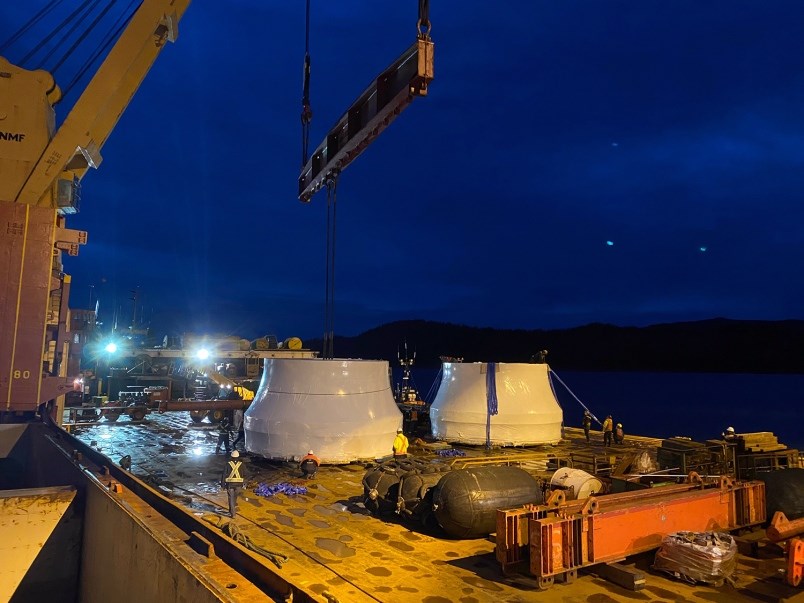The first two turbine runners for the Site C dam have arrived in Canada, and are expected to be shipped to Fort St. John in January.
The machinery was shipped from Sao Paulo, Brazil, at the end of October, and arrived in Prince Rupert on Dec. 2. They’ll be transported to Fort St. John next month and "aren’t expected to arrive at site until late January 2021," said project spokesman Dave Conway.
Each runner weighs about 170 tonnes, and measure 17 feet tall and 26 feet wide.
“The runner is the rotating part of a turbine (like a fan or a windmill) that converts the gravitational energy of falling water into mechanical energy, which then spins a generator to produce clean hydroelectric power,” Conway told The Northern View newspaper.
“The turbine runners are the heaviest unassembled single project component of equipment related to the generating station," he said.
Voith Hydro was awarded a $470-million contract in April 2017 to design, supply, and install six turbines, six generators, and associated equipment for the Site C powerhouse.
The company, headquartered in Montreal, previously completed upgrades to the G.M. Shrum Generating station at the W.A.C. Bennett Dam.
The turbines and generators are being custom built to "the site specific conditions" of the dam at Voith’s facility in Brazil, which BC Hydro says will generate 5,100 gigawatt hours of electricity each year.
The runners will be transported at night when Highway 16 can be closed appropriately to accomodate moving the massive, oversized loads, the Northern View reported.
The next shipments are expected to arrive in Prince Rupert sometime in spring 2021 and again in summer 2022. Work on turbine installation is expected to peak in 2022.
As of Dec. 22, there were 317 workers reported at the Site C work camp, down from 1,400 at the start of the month.
"The drop in camp occupancy is primarily a reflection of the workforce reduction for the holidays," said Conway.



